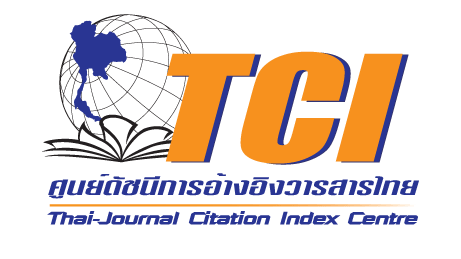THE TRANSMISSION PROCESS OF KNOWLEDGE AND TECHNIQUE FOR PLAYING KHLUI IN THAI COUNTRY SONGS
Keywords:
Knowledge Transmission Process, Technique for Playing Khlui, Thai Country SongsAbstract
This research aims to: (1) examine the biographical backgrounds of Khlui experts in Thai country songs; (2) explore knowledge transmission in Khlui playing Thai country songs; and (3) create an educational e-book on Khlui. The study employed a qualitative approach, specifically interpretative phenomenology, and purposive sampling to select seven recognized Khlui performance experts. Data was collected through in-depth interviews and participant observation.
The research findings reveal that all seven Khlui experts who specialized in Thai country songs showcased remarkable expertise and extensive experience, earning recognition for their contributions to Khlui performances. The study details the knowledge and technique transfer process, covering principles, methods for different age groups, steps, and psychological aspects. The study identifies various Khlui playing techniques, such as seating, posture, handling, airflow, finger system selection, and Khlui selection. The study highlights phenomena such as the historical evolution of Khlui-Thai, contemporary livelihood conditions for Khlui players, and adaptations to modern learning methods. The electronic book includes (1) the biographical backgrounds of Khlui experts in Thai country songs; (2) the transmission of knowledge for performing Khlui in Thai country songs; and (3) playing techniques for playing Khlui for Thai country songs style.
References
Bhumithavara, Krittavit. “The Legend of the Thai Country Music Teacher, Suraphon Sombatcharoen.” Document Submitted to Narongchai Pidokrajt, Unpublished, 2014. (in Thai)
Damronglerd, Chintana. “Evolution and Elements of Country Music.” In Half a Century of Thai Country Music Part 2, Edited by Anake Nawigamune, 40-49. Bangkok: Amarin Printing Group, 1991. (in Thai)
Dema, Jiraphan. “Electronic Book.” Academic Services Journal 13, no. 1 (January-April 2002): 1-14. (in Thai)
Kanchanapradit, Jarun. Khlui. Khon Kaen: Khon Kaen University Press, 2011. (in Thai)
Kasemsuk, Rangsi. Khlui Worldview. Bangkok: Faculty of Education, Srinakharinwirot University, 1992. (in Thai)
Kongpinitbovorn, Ratchakrit. “Contemporary Music is a New Paradigm for Teaching Music Education in the 21st Century.” Bansomdej Music Journal 1, no. 1 (January-June 2019): 49-66. (in Thai)
Krobthong, Siriporn. The Evolution of Thai Country Songs in Thai Society. Bangkok: Panthakit, 2004. (in Thai)
Naewsoong, Pannawit, and Varin Rasameprom. “A Development of Electronic Book on the Thai Musical Instruments for Prathomsuksa 4 Students.” Chandrakasem Rajabhat University Journal 20, no. 38 (January-June 2014): 77-85. (in Thai)
Nakasawat, Uthit. Thai Music Theory and Practice, Part 2, Thai String Instrument Practice Manual. Bangkok: Prayurawong, 1982. (in Thai)
Narkkong, Anant. “Thai Contemporary Music Bands and Works in present Thai society.” Research Report, Office of Contemporary Art and Culture, Ministry of culture, 2013. (in Thai)
Phongsiri, Banlue, and Peep Konglaithong. “Advice from Tiab Konglaithong on Khlui.” In Memorial Book for the Cremation Ceremony of Tieb Konglaithong, 99-109. Bangkok: Liang Chiang, 1982. (in Thai)
Roongruang, Panya. History of Thai Music. Bangkok: Thai Wattana Press, 2003. (in Thai)
Sriklindee, Thanis. Honoring the Artist Khlui Playing the Royal Compositions. Bangkok: Nawasan Press, 2008. (in Thai)
Suebwong, Chumchon. “An Analysis of The Khlui Playing Techniques by Ajarn Tanis Sriklindee on His Majestic King Bhumibol Adulyadej’s Compositions.” Master’s Thesis, Srinakharinwirot University, 2009. (in Thai)
Suttachitt, Narutt. Music Education Principles and Essence. Bangkok: Chulalongkorn University Press, 2018. (in Thai)
Treenet, Pornchai. “Technique for Playing Khlui.” Interview by Nutthapat Ruangboon, April 11, 2023.

Downloads
Published
How to Cite
Issue
Section
License
Copyright (c) 2024 College of Music

This work is licensed under a Creative Commons Attribution-NonCommercial-NoDerivatives 4.0 International License.
The copyright of the article belongs to the author. Published articles represent the views of the authors. The editorial team neither necessarily agree with nor take any responsibility for the article.





